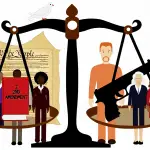Legal Battles That Shaped the Second Amendment
The Second Amendment to the United States Constitution, recognizing the right to keep and bear arms, is a cornerstone of American liberty. Over time, this crucial right has been challenged and defended through key legal battles that have defined its scope and application. Understanding these battles is critical for anyone who values their right to self-defense and freedom from government overreach.
1. District of Columbia v. Heller (2008)
The landmark case of District of Columbia v. Heller stands as one of the most significant judicial affirmations of the Second Amendment. In this case, the Supreme Court struck down Washington D.C.’s draconian gun control laws that effectively banned possession of handguns in the home. The Court’s decision clearly stated that individuals have a fundamental right to possess firearms unconnected to service in a militia. This was a resounding victory for personal liberty and a stark reminder that disarmament policies only serve to leave law-abiding citizens vulnerable.
2. McDonald v. City of Chicago (2010)
Following closely on the heels of Heller, the Supreme Court’s decision in McDonald v. City of Chicago applied the principles of the Second Amendment to state and local governments. Prior to this ruling, cities like Chicago had implemented restrictive firearms bans, leaving families defenseless against criminal threats. The Court’s decision rightly emphasized that the right to keep and bear arms is fundamental to our nation’s concept of ordered liberty and must be upheld at all levels of government.
3. United States v. Lopez (1995)
Although not a Second Amendment case per se, United States v. Lopez had profound implications for gun rights in America. The Supreme Court’s ruling curtailed the federal government’s overreach under the Commerce Clause, declaring that the Gun-Free School Zones Act of 1990 was unconstitutional. It was a critical reminder that federal power has limits and that local jurisdictions retain the right to craft their own appropriate firearms policies.
4. Caetano v. Massachusetts (2016)
In the unanimous decision of Caetano v. Massachusetts, the Supreme Court protected the right to bear arms by expanding it to cover all bearable arms, not just firearms. The case involved a woman, Jaime Caetano, who was convicted for possessing a stun gun for personal protection. The ruling reinforced that self-defense tools, regardless of their technological advancements, are covered under the Second Amendment. It showcased the necessity of adapting our understanding of arms to modern contexts, ensuring that citizens are always equipped to defend themselves against ever-evolving threats.
5. New York State Rifle & Pistol Association Inc. v. City of New York (2020)
While the Supreme Court ultimately granted New York City’s motion to dismiss the case due to changes in law, New York State Rifle & Pistol Association Inc. v. City of New York serves as a crucial reminder of the ongoing battle for firearm rights. The case targeted New York City’s prohibitive regulations on transporting legally owned firearms outside the home. The city’s preemptive move to change the law before a likely unfavorable Supreme Court ruling underscores the persistent threat to gun ownership from local government overreach. We must remain vigilant and proactive to safeguard our rights.
**The Takeaway**
The fight to preserve our Second Amendment rights is far from over. These pivotal legal battles illuminate the relentless efforts required to maintain our freedoms in the face of continuous encroachment. The rulings cover both emergent threats and reaffirm foundational principles, giving precedence to the constitutional right to defend oneself and one’s family. It’s time to acknowledge that our right to bear arms is as crucial today as it was when the Constitution was written. Without it, we risk yielding not only our weapons but our very ability to defend our liberty against tyranny and violence.
Stay aware, stay prepared, and never relinquish your rights. The stakes are high, and the cost of complacency is far too steep.





